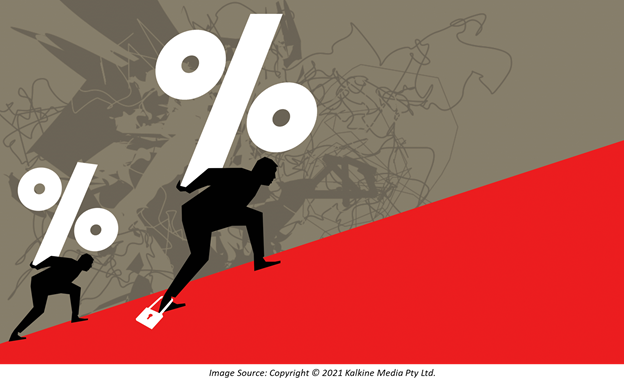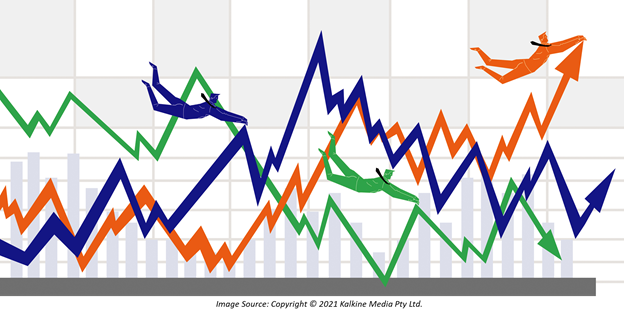Summary
- Bond yields have a significant impact on the economy and the stock markets, with rising bond yields usually indicating a stock market slowdown.
- Interest rates are inversely linked to bond prices due to the time-honoured tradition of demand and supply.
- Inflationary pressures can wear out the returns received on the bonds, indirectly inviting expansionary monetary policy.
Rising bond yields are often the cause of panic among investors who have vested interests in the equity market. US Treasury yields are used as benchmark across nations and influence prices in every sphere of the financial sector. A spike in the Treasury yields is an alarm bell for equity investors as it prompts higher investments in the bond market against a withdrawal from the stock market.
Also Read: What are the Factors Impacting Bond Yields?
The effect of surging bond yields on individual pocketbooks can also be seen through the property market. This happens as interest rates charged on fixed-rate loans tend to shadow the movements observed in the Treasury yields. At the same time, savers could start to see a rise in rates in their high-yield savings account.

Just like commodities, bond prices are also highly receptive to changes in the demand and supply for investment money. Higher rates attract more buyers to the bond market, which drives bond prices up and ultimately rates back down. Other major causal factors behind the surge in bond yields can be the expectations of economic expansion and the associated inflation.
Here is a closer look at how bond yields are impacted and how this impact is forwarded to the rest of the market:
Bond Yields and Monetary Policy
Interest rate moves in the same direction as bond yields; however, the underlying mechanism involves several stages. As interest rates are increased, the new bonds issued have a higher yield associated with them due to this rise. However, pre-existing bonds lose their value in the market.

Thus, if Bond A offers a higher yield tomorrow than Bond B today, then the prices for Bond B must adjust to make the coupon payments equal and make both bonds equally attractive. If the price adjustment does not take place, then most investors would prefer going for Bond A, which will offer a higher yield tomorrow.
For bonds belonging to the similar category, coupon payments must adjust to remain the same. This leads to price changes in bonds offering different yields.
Good Read: Five Tips to Maintain Financial Hygiene amid Rising Bond Yields
Bond Yields and Inflation
Under inflationary pressures, investors usually turn to bond markets instead of equity markets. Expectations of a price increase can lead to bond prices falling, with a corresponding rise in yield. Rising prices erode the potential returns that are offered on a bond. As nominal interest remains the same and inflation rises, the real rate declines, as understood by the following formula:

When inflation is on its way up in a country, investors tend to expect higher returns on the bonds to make up for the losses in purchasing power caused by inflation. Simply put, the existing inflation causes a triggering effect on people’s expectations for the future inflation level.
Inflation also affects bond yields indirectly by urging a response from central banks in the form of expansionary monetary policy. This is done to reduce the short-term demand for credit. This short-run increase ends up affecting the intermediate and long-run rates in the market. Consequently, bond prices fall, and bond yields rise.
Impact on Other Assets
The risk-free rate, which is a theoretical rate of return on a zero-risk investment, is incorporated into the calculation of the expected rate of return on an equity. The risk-free rate is calculated by subtracting inflation from the treasury bond yield, drawing a relationship between bond yields and equity markets. Given that long bond yield represents the risk-free rate, a higher bond yield is generally bad for equities.

While high yields can paint a negative scenario for equity markets, the cause for the hike in yields must also be examined before jumping to any conclusions. This is so because, yields rise with inflation as well as with high economic growth, but both these scenarios have a different impact on the stock market.
Inflation-induced yield hike would most likely encourage investors to move from equity to bonds. However, a yield surge caused by economic growth can be a good sign for the equity market as well. When the growth is strong, dividends more than offset the negative impact caused by rising yields on the stock market, inducing a surge in share prices.
Do Not Miss: Curious about bond investing? Here are three tips for you


_06_30_2023_10_37_44_979056.jpg)


